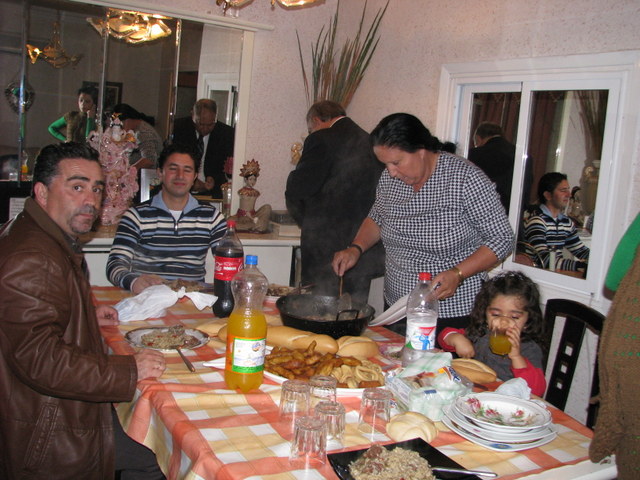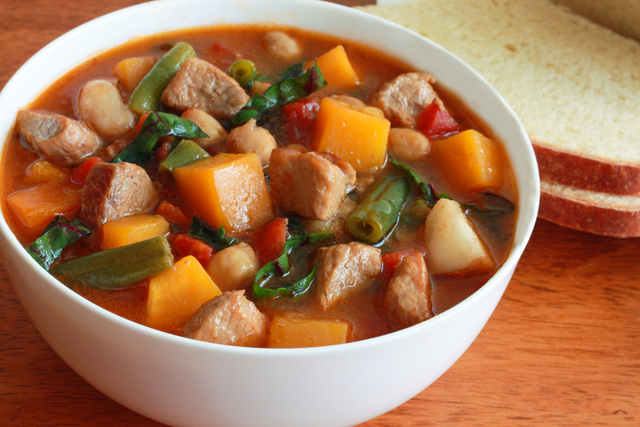Guest Post by Susan Nadathur
November 22 commemorates the arrival of the first Romani people to Andalusia and celebrates their contributions to the culture that now defines the area. The Romani, including the Spanish Gypsies, are descendants of the ancient warrior classes of Northern India who trekked westwards around AD1000. Their migration took them through Persia and Armenia into Europe and later America. Their earliest presence in Spain is noted in Zaragoza (Aragon) from 1425 and in Barcelona (Catalonia) from 1447. They arrived in Andalusia in the year 1462, where they were well received and given both food and shelter.
In return, the Gypsies who stayed in the area have contributed much to Andalusian culture, including flamenco music, styles of clothing, and food traditions. Gypsy cuisine reflects a nomadic way of life, and includes wild plants, fish, and game that could be taken opportunistically. In modern society, Romani cooking mirrors the country and culture the Gypsies live in, and has been adapted to the types of foods that are readily available. While researching my novel City of Sorrows, I lived for extended periods of time with a Gypsy family in Seville. During that time, I was treated to several delicious feasts. The food was always hearty and was reflective of what this family’s ancestors ate in the Gypsy camps in days gone by. Here’s a picture of what one of those feasts looked like.
Historically, the main meal was prepared in a large iron pot and left to cook gently all day while the Gypsies went about their activities. This was typically a stew or soup containing whatever meat and vegetables were available on a given day. Recipes have survived through the centuries, frequently undergoing intervention and interpretation to meet the tastes of a particular time. Very few recipes were ever written down; most were handed down verbally through generations. Today, as modern life encroaches on the traditional Romani ways, the old traditions are disappearing rapidly. Convenience foods, modern cooking tools, and appliances have ousted the old cooking methods and traditional recipes, although some are still made for special occasions. One meal that has survived and appears on the table of most Spanish Gypsy families is the Gypsy Stew. Below is a modified recipe for this popular dish.
Spanish Gypsy Stew (Olla Gitana)
Ingredients
- 1 Cup Chickpeas — canned or fresh (soaked overnight)
- 2 Pounds Pork – cubed
- 1/2 lb Chorizo Sausage
- 1 lb Pork Bones (you can get these from your butcher)
- 10 Cups Water
- 2 Medium Potatoes — peeled and cubed
- 2 Medium Bay Leaves
- 1 Medium Onion — finely chopped
- 3 Cloves Garlic — finely chopped
- 1/3 Cup Olive Oil
- 2 Cups Pumpkin — peeled and cubed (butternut or acorn squash may also be used)
- 1 Cup Green Beans
- 2 Tomatoes — diced (1 15 oz can of petite diced tomatoes may also be used)
- 1 Bunch Swiss Chard Leaves — chopped
- 1/2 Cup Bread Crumbs
- 1 Ounce Almonds
- 1/4 Teaspoon Saffron
- Salt And Pepper — to taste
- 1 Tablespoon Red Wine Vinegar
Directions
- Heat the olive oil in a large soup pot on medium-high heat. Pat the pork cubes with paper towels to dry (this will enable browning). Fry the cubes of pork on all sides until nicely browned. Remove and set aside. Fry bones until the meat on them is browned. Remove and set aside. Fry the chorizo until no longer pink. Remove and set aside. Add the onions and sauté until translucent. Add the garlic and sauté for another minute.
- Return the pork, pork bones, and chorizo to the pot and fill with water just until the meat is barely covered. Simmer for five minutes. Then add the water, garbanzo beans, pumpkin, potatoes, tomatoes, bay leaves, and chard leaves. Simmer for 15 minutes. Grind almonds and mix with bread crumbs. Add this mixture to the stew along with saffron. Return to a boil, then reduce the heat to low, cover and simmer for another 30 minutes or until vegetables are tender. Add salt and pepper to taste. Stir in vinegar and serve with crusty bread.
Susan Nadathur is a widely-traveled writer, teacher, and self-proclaimed “outsider” from Connecticut who lives on-and-off in Spain with an extended family of Gypsies in Seville. To read more about Susan’s experiences with the Gypsies in Seville, click here: How I ended up living with the Gypsies.
To read more about the book that was inspired by this experience, click here: City of Sorrows Synopsis. City of Sorrows is Susan’s debut novel—an epic story of love, romance, passion and pain set in the heart of Gypsy Spain. Susan blogs about Gypsies and life at http://susannadathur.com.
In honor of the Spanish celebration “El Día de los Gitanos Andaluces” (The Day of the Andalusian Gypsy) celebrated on November 22, City of Sorrows is being offered at the promotional price of $9.59 for the print book and $4.19 for the Kindle book, a savings of 40% off the retail price, throughout the month of November. City of Sorrows is available for purchase at Amazon or via the author’s website.


Thanks for this insightful article and wonderful recipe.